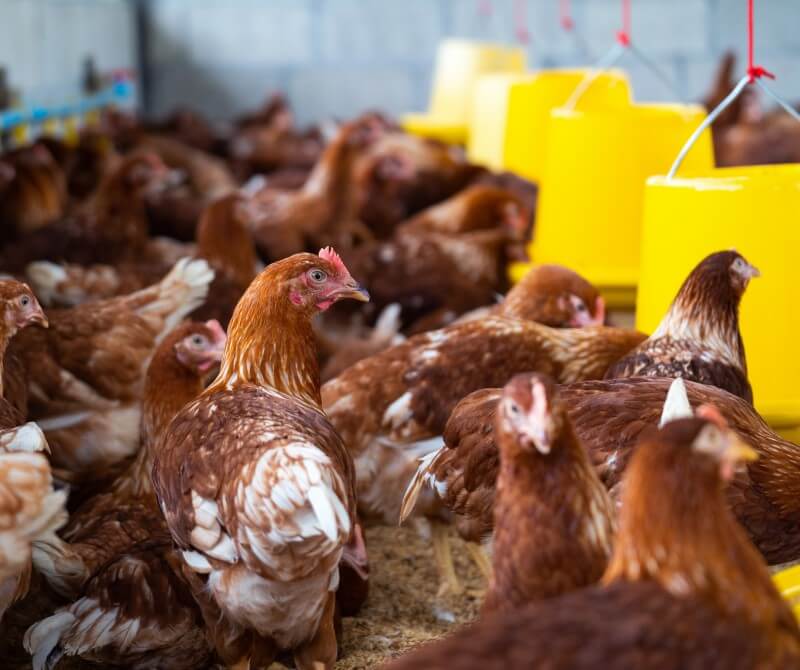The Role of Automation in Modern Poultry Diet Manufacturing Equipment Boosting Efficiency

The poultry industry has undergone a significant transformation, driven by advancements in automation. Modern poultry diet manufacturing equipment is at the forefront of this industrial trend and provides solutions to enhance operational efficiency and productivity and significantly reduce labour costs. While automation in the poultry industry has increased rapidly due to innovation and upgrading of equipment, let’s explore how automated equipment emphasises the efficiency and labour savings impact of manufacturing diets and other essentials for the poultry sector.
1: Precision Feeding System
Automated precision feeding systems in modern poultry diet manufacturing are important. These systems are basically designed to formulate and dispense feed with high accuracy, ensuring that each batch meets the nutritional requirements of the poultry. Precision feeders are programmed to adjust the feed composition based on the age, weight, and even the health status of the bird in mind. Through such variations, growth and productivity are monitored. The level of accuracy in diet manufacturing requires consistency and balance for overall performance.
2: Automating Mixing and Grinding Equipment
Mixing and grinding are the critical steps in poultry diet manufacturing. Automated mixing and grinding equipment makes sure that feed ingredients are uniformly mixed and grounded as per desired consistency. These machines handle a large volume of food and reduce the time and labor involved in manual sorting and measuring of the ingredients. Automation in mixing and grinding improves efficiency in production, but it also increases the quality of feed essential for the growth of poultry.
3: Pelleting System
One of the most common methods of feed processing is pelleting. Pelleting refers to improving the digestibility and palatability of poultry diets. Automating this process will streamline the process of producing high-quality pellets. These systems control temperature, pressure, and moisture levels, ensuring the feed remains nutritional and consumable for poultry. The automation process actually leads to reducing labor costs and minimizing the risk of human error to a large extent.
4: Packaging and Storage Solutions
No diet manufacturing can be completed without good packaging and storage abilities. Once the feed is manufactured, it needs to be packaged and stored properly to maintain quality and seal. All diet production is rapidly filled, sealed, and labeled to ensure protection from contamination and degradation. The best feature of automation in this process is that sensors and controls monitor the packaging process and solution through consistency and reduce error. Automated storage solutions such as conveyors and silos facilitate the efficient handling and transport of feed, reducing labor requirements and improving operational efficiency.
5: Quality Control and Monitoring System
Ensuring the quality and safety of the poultry is paramount. The automation process here uses advanced sensors and analytics to monitor the feed manufacturing process in real time. Any deviations detected in feed composition, moisture levels, or critical parameters allow for immediate corrective action. Hence, quality control manufacturers ensure that they meet safety standards and reduce the risk of contamination.
6: Labor Cost Reduction and Efficiency Gains
The primary benefits of automation in poultry diet manufacturing are a significant reduction in labor costs and improved overall operational efficiency. Automated equipment can operate continuously with minimal supervision and manual labour. This only cuts down on labour costs, mitigates the risk of human error, and increases the consistency and quality of the diet.
M&M Poultry Diet Manufacturing Equipment
Automation is transforming the poultry diet industry to a large extent. From substantial improvement to major development in reducing labour costs and increasing efficiency, The integration of major diet manufacturing equipment in poultry increases the quality and nutritional value of the diet.
At M&M Equipment Corp., automation equipment such as mixers, grinders, labelling machines, and even packaging machines adds value to the process and operation. We understand the need for the latest updates on equipment and make sure to store it in the best condition possible. Poultry equipment such as the Hollymatic 180-A Mixer Grinder or the Kramer Grebe MM400 Ribbon Mixer and the Weiler Omni V220 Grinder, combined with the latest equipment, i.e., the Tomahawk TH-27 Cuber or the Multivac T300 Tray Sealer, are not only available but can also be purchased from them.
As the poultry industry continues to grow and embrace automation, benefits like efficiency, cost savings, and increased productivity are leading the way towards a more sustainable solution.
